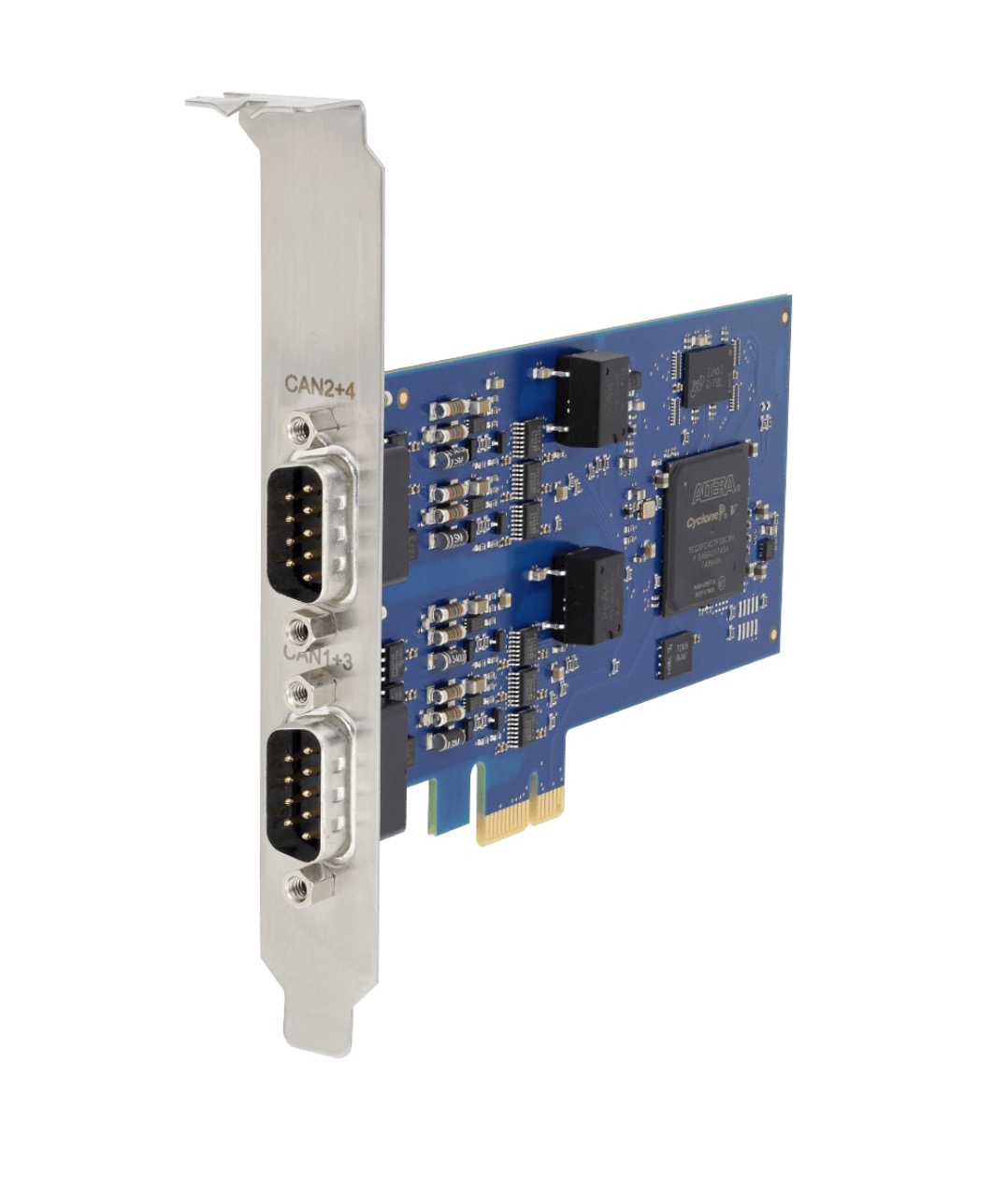Recent Posts
PCIe Board Features Four Channels For CAN FD/Classical CAN And LIN Bus Connectivity
Posted by on
HMS Networks extended its IXXAT PC-interface portfolio with the introduction of its multi-channel board CAN-IB 640/PCIe, which provides four channels, each for CAN FD/Classical CAN and LIN Bus connectivity.
Automotive systems and industrial applications often operate using several Classical CAN and CAN FD networks, connected to additional testing, monitoring, and control systems. The multi-channel CAN-IB 640/PCIe card offers the required network connectivity and integration. Featuring four channels for CAN FD/Classical CAN and LIN Bus connectivity, respectively, the product satisfies the demands for multiple applications with only one card. In cases where increased connectivity is required, several of these boards can operate in parallel – a feature supported by all IXXAT CAN Bus boards.
The product is an active PC-interface with an onboard micro-controller system that can read, timestamp, and filter serial data in real-time. The network connection is made via two D-Sub 9 connectors that are galvanically isolated to protect the card and the connected PC system.
The CAN Bus interfaces come with extensive driver packages for Windows and Linux, including SocketCAN. The drivers support the development of customer-specific applications, most prominently since all IXXAT PCI-cards can be accessed by the application in the same way. This enables switching between different types of PC-interfaces, e.g., USB, PCIe, PCIe Mini, and Ethernet, without the need to modify the customer application software.
A monitoring tool for Windows is included in the scope of delivery, but IXXAT offers various further analysis and configuration tools for different purposes. In addition to the proprietary driver packages, standardized APIs (Application Programming Interface) such as the J2534-Passthru or D-PDU API, are available as options, enabling connectivity to 3rd party tools.
Guide to Automotive Connectivity and Cybersecurity: Trends, Technologies, Innovations and Applications
This comprehensive text/reference presents an in-depth review of the state of the art of automotive connectivity and cybersecurity about trends, technologies, innovations, and applications. The text describes the challenges of the global automotive market, clearly showing where the multitude of innovative activities fit within the overall effort of cutting-edge automotive innovations and provides an ideal framework for understanding the complexity of automotive connectivity and cybersecurity.
Topics and features: discusses the automotive market, automotive research and development, and automotive electrical/electronic and software technology; examines connected cars and autonomous vehicles, and methodological approaches to cybersecurity to avoid cyber-attacks against vehicles; provides an overview on the automotive industry that introduces the trends driving the automotive industry towards smart mobility and autonomous driving; reviews automotive research and development, offering background on the complexity involved in developing new vehicle models; describes the technologies essential for the evolution of connected cars, such as cyber-physical systems and the Internet of Things; presents case studies on Car2Go and car-sharing, car-hailing and ridesharing, connected parking, and advanced driver assistance systems; includes review questions and exercises at the end of each chapter. This practical guide's insights will be of great value to graduate students, academic researchers, and professionals in the industry seeking to learn about the advanced methodologies in automotive connectivity and cybersecurity.
 Loading... Please wait...
Loading... Please wait...


